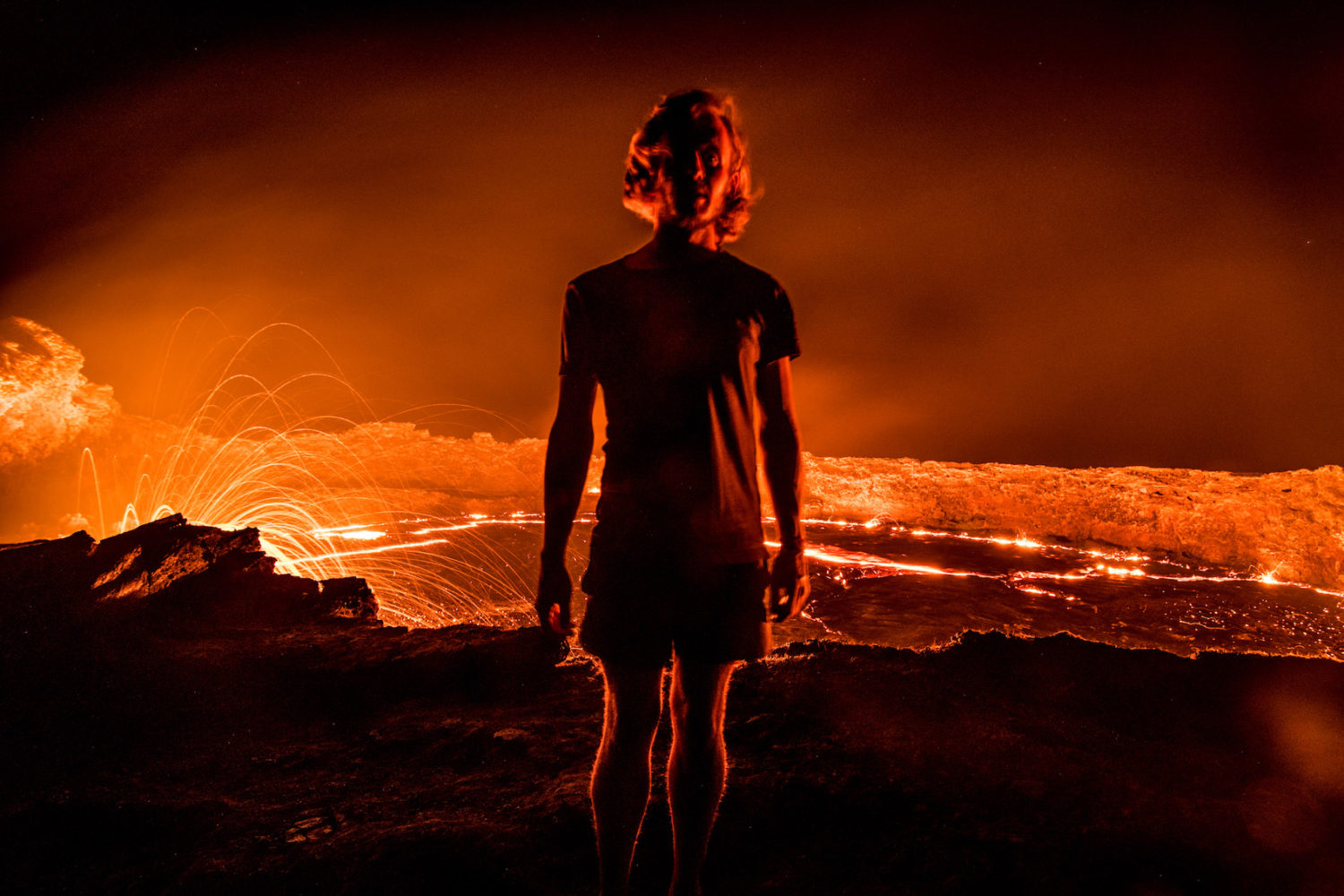As my vehicle dropped out of the Ethiopian Highlands and into the Danakil Depression, the temperature increased in equal measure with the decrease in elevation. The sun was blinding and the air searing, but what I remember most about my first night in the sixth-lowest place on Earth is the wind. And the rain.
If I feel more drops than I do right now, I remember thinking in my half-conscious state, fearing my body would blow away, never to be seen again, I’ll go back to the car.
The heat had not meaningfully dissipated in the wake of the daylight’s dramatic departure, but the sealess gale made the drops feel cooler than their size suggested they would.
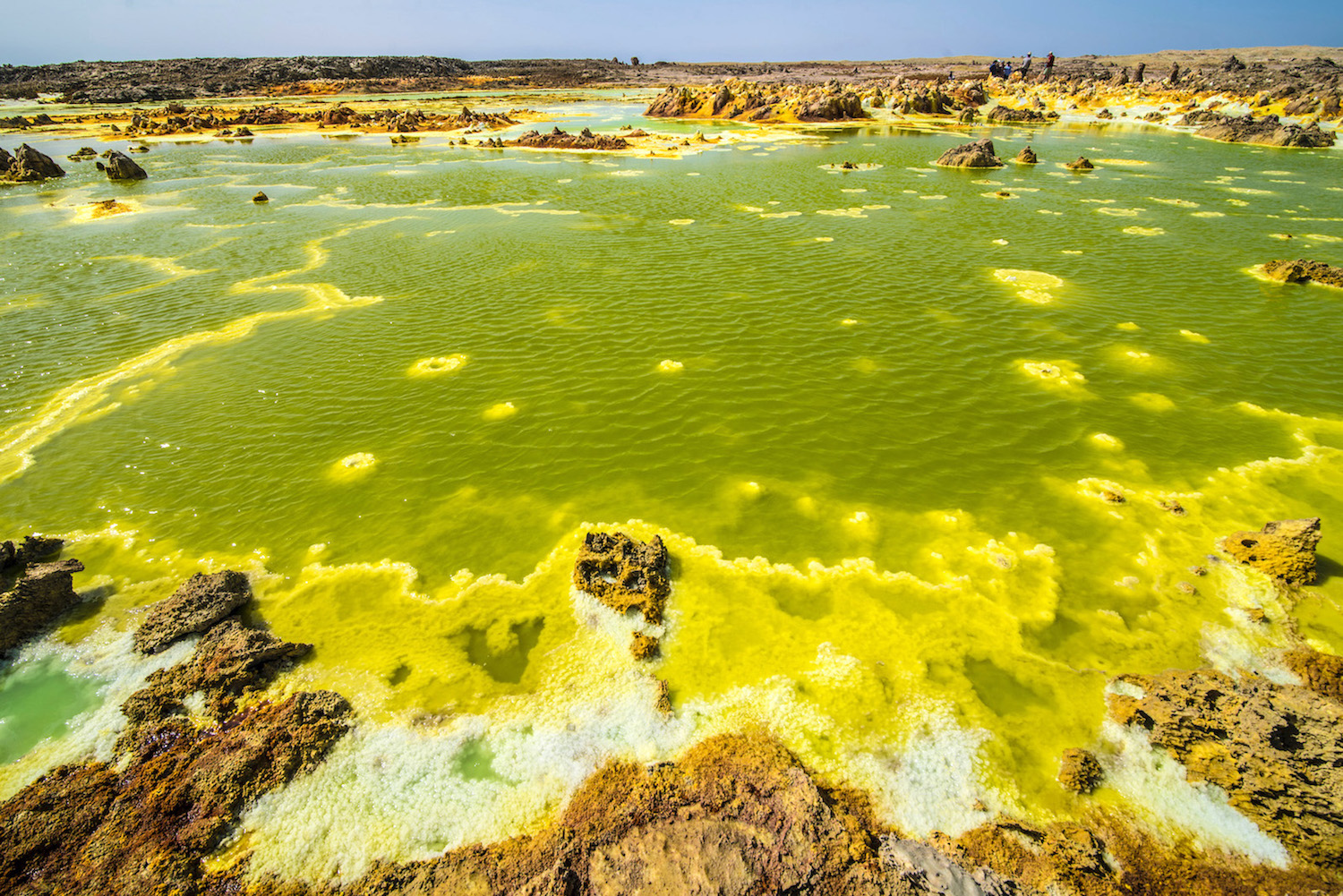
The thing one girl fears in the night is another girl’s paradise—and, to be sure, heaven and hell can trade places out here as fast as the light comes over the horizon. Dallol and its sulfur fields were as visually paradisiacal as they were viscerally poisonous: The liquid pooled in them was sulfuric acid.
And yet, as grave a threat as walking through this extraterrestrial terrain might’ve posed to my mortality, defecating in a squat toilet later that evening proved a much more existential crisis for me. Yes, I know squatting is “better” for you than sitting, and this wasn’t the first time I’ve been made to do it, but dignity trumps disgrace, even if it means you get colon cancer one day.
I wish I had flip flops for my hands, I cringed as I used them to balance myself. Or, at least, that I’d learned to squat properly as a child.
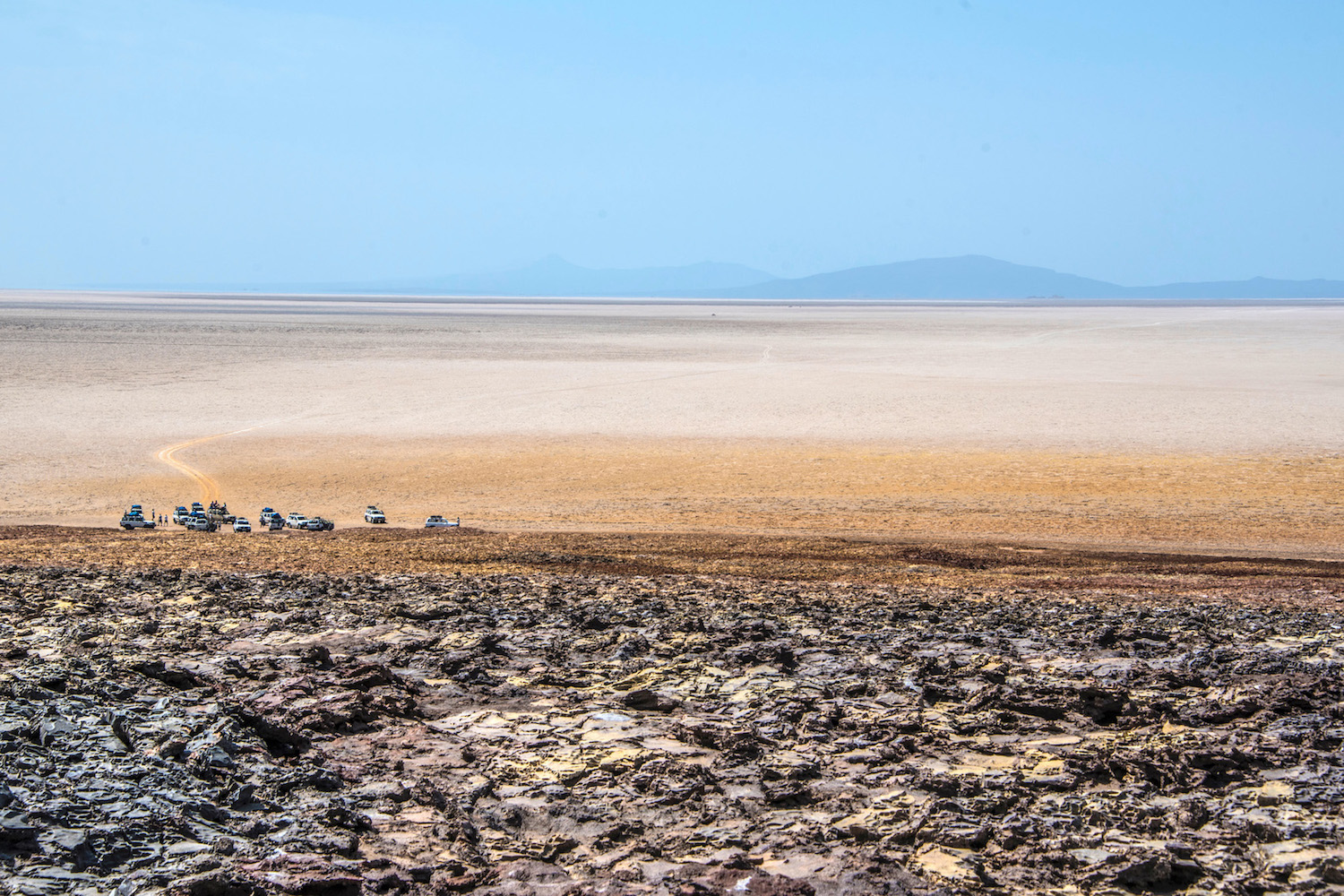
Headed south on day three, which felt at once like day two and day 20, my guide told me to temper my expectations. “The road,” he explained, referring to the lava field that serves as the only way to access Erta Ale, a volcano that serves as the actual entrance to hell in this uniformly Luciferian landscape, “has been flooded, according to the military lookouts.”
(Military escorts accompany you every moment of your journey in the Danakil Depression, on account of Eritrea’s hijinks here a few years ago, although I should note that they all had baby faces and wore jelly shoes—I certainly didn’t feel any safer due to their presence.)
I suspected, the closer we drove to the seeming floods, that the standing water might’ve been a mirage; the soldiers’ admission that they hadn’t actually driven out there to inspect it heightened my suspicion. I ended up being right, as I usually am when I’m not worried about seeming cynical or paranoid.
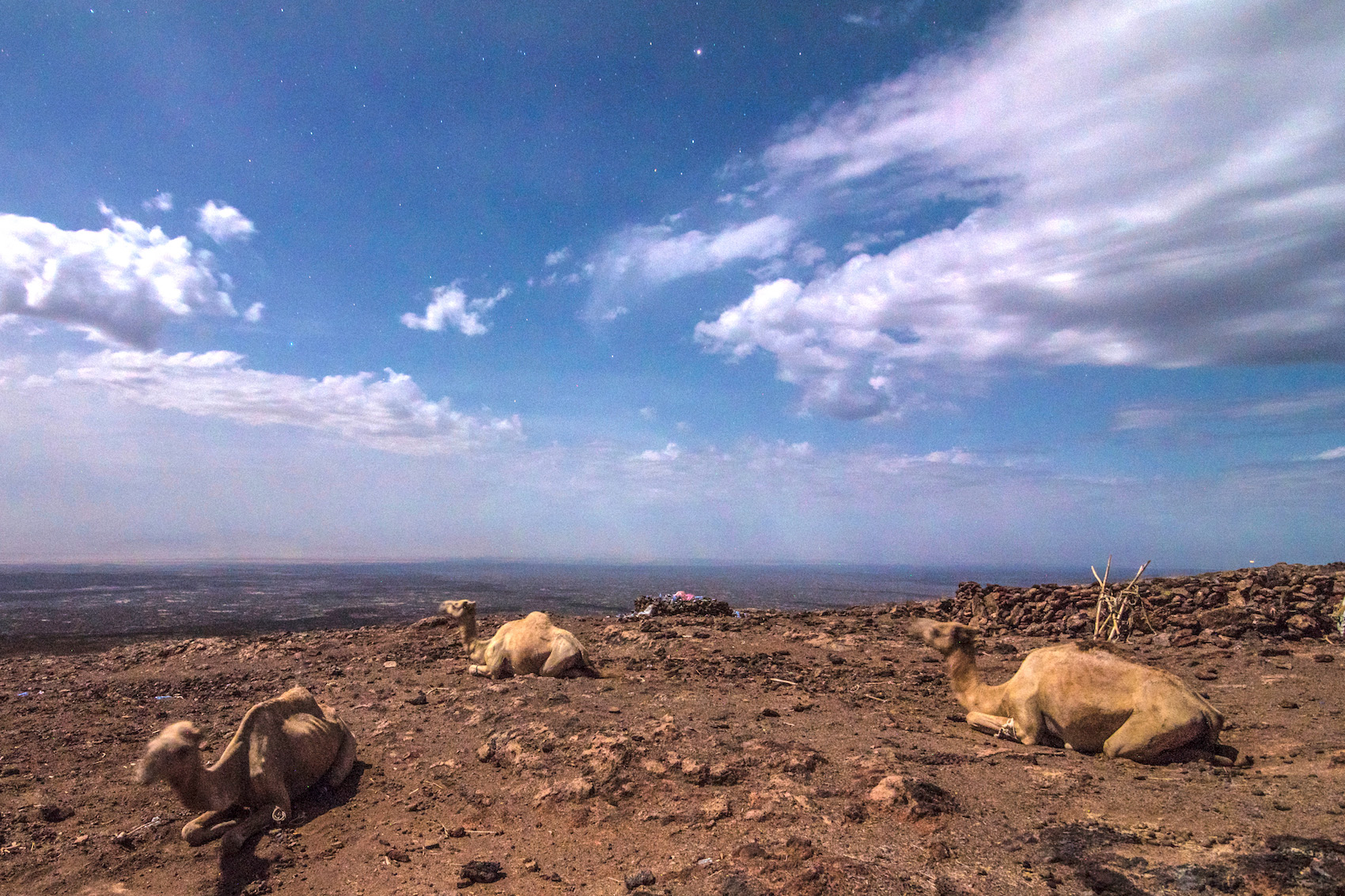
I’ve only been blind twice in my life: Once, at a bus station in the Philippines, when I discarded my disposable contact lenses, only to realize I had left my glasses elsewhere; and upon waking up before dawn at the summit of Erta Ale, when the wind that had cooled my slumber blew away several pairs of the same sorts of contacts I’d willfully discarded in the outskirts of Manila years earlier.
I didn’t have my glasses either, on this second occasion, but I did bring a whole box of lenses—I was smart enough to hide behind a makeshift stone structure before I’d depleted my inventory.
“They kidnapped them,” the guide said matter-of-factly, in reference to Eritrea’s aforementioned hijinks, as we marched toward the fire in the distance. “And murdered them.”
I’m glad I didn’t know that before I paid for this trip, I laughed, not amused in the slightest, as I began to notice the heat of the volcano scorching my skin and, simultaneously, the heaps of plastic bottles the just-born daylight illuminated. Or before I didn’t sign the waiver they never gave me.
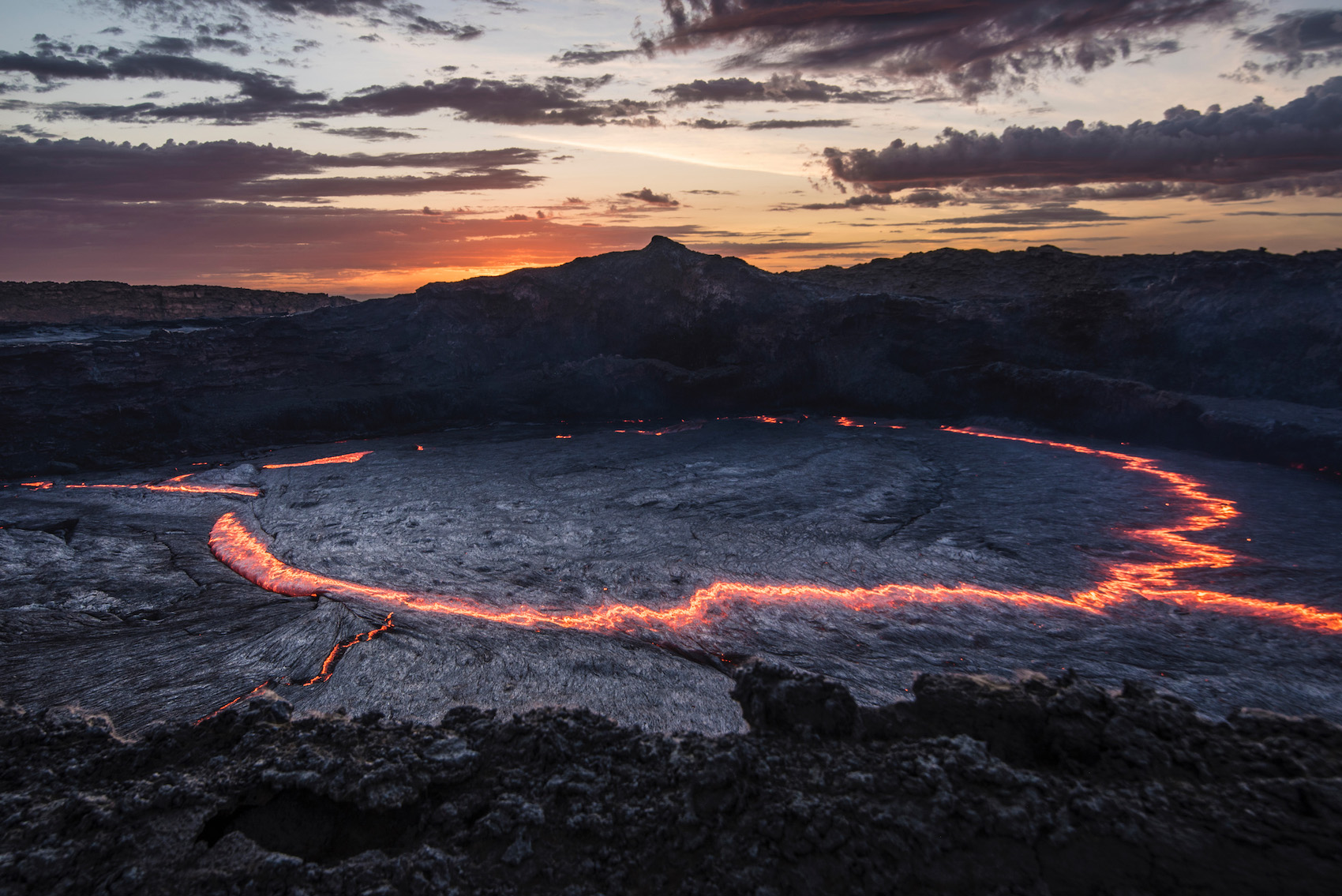
The next evening back in Mekele, on my way to the airport to begin my long journey back to Texas, I realized the cab I’d hopped into lacked wipers. The driver didn’t fret as the downpour all but obscured the road in front of him, nor did he stick his head out the window, Ace Ventura-style. He didn’t react in any way—he just kept going.
I should’ve been terrified, but I felt solidarity with him instead. The way he sped along the road, in spite of the cataract his windshield had become, necessitated the same sort of spiritual sonar that had guided me through my tumultuous trip.
Selective vision is a necessity, on the Ethiopian plateau and in the hellish valleys beneath it, whether your selection is to be blind or to see.
Other FAQ About the Danakil Depression
Is the Danakil Depression the hottest place on Earth?
The Danakil Depression is generally regarded as the hottest place on Earth, with average temperatures hovering close to 100ºF. While some places on earth occasionally get hotter, none are as consistently hot as Ethiopia’s Danakil Depression.
Does anyone live in the Danakil Depression?
Various members of the Afar tribe reside permanently in the Danakil Depression, but life here is extremely hard and not especially sustainable. Most live far from the hellish landscape of Dallol, and in small towns where the landscape is more hospitable.
How hot is the Danakil Desert?
Average high temperatures in the Danakil Desert are 94ºF, although temperatures as high as 122ºF are not unheard of. Given that it basically never gets “cold” in Danakil, this region can be thought of as the hottest place on earth.



